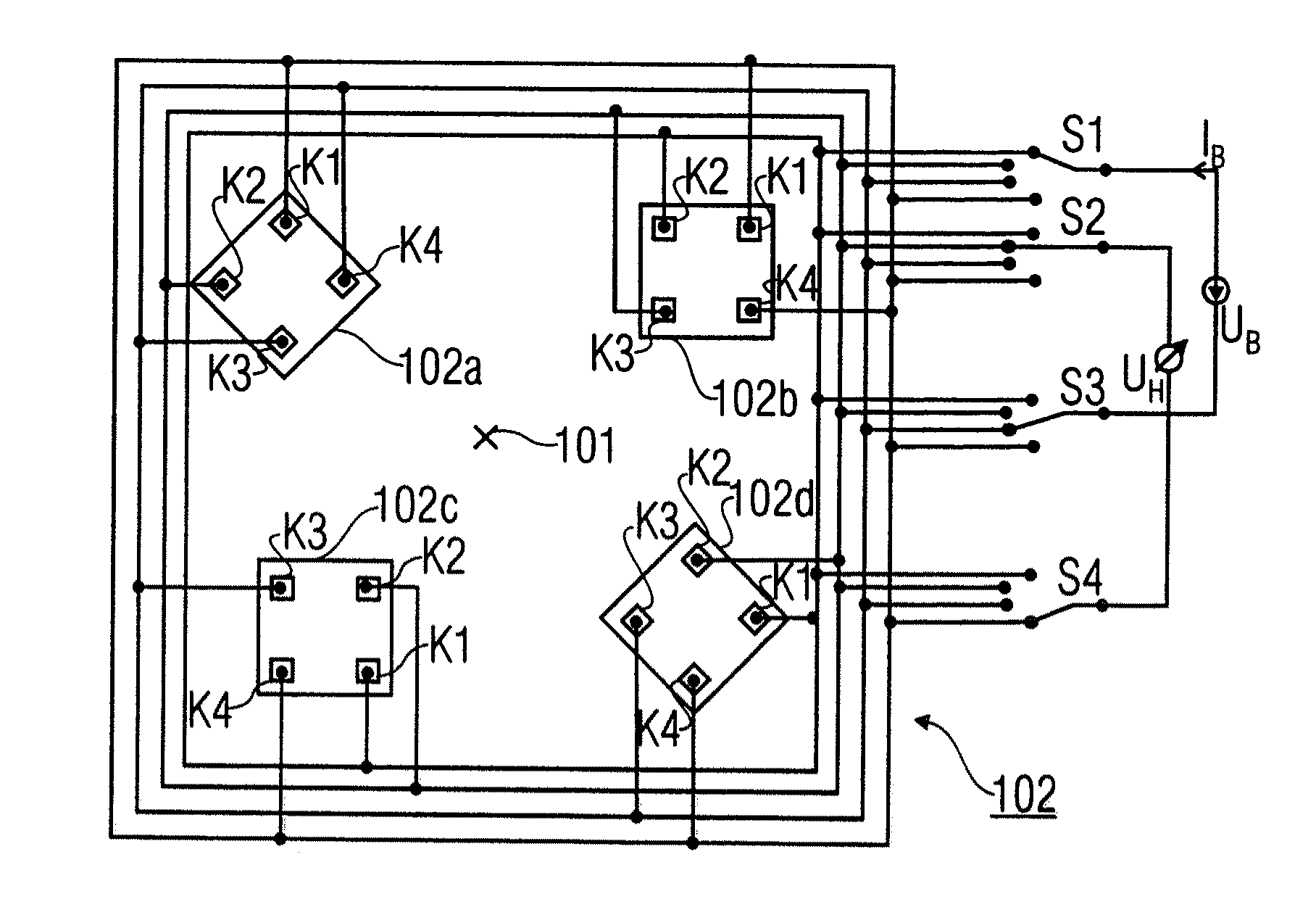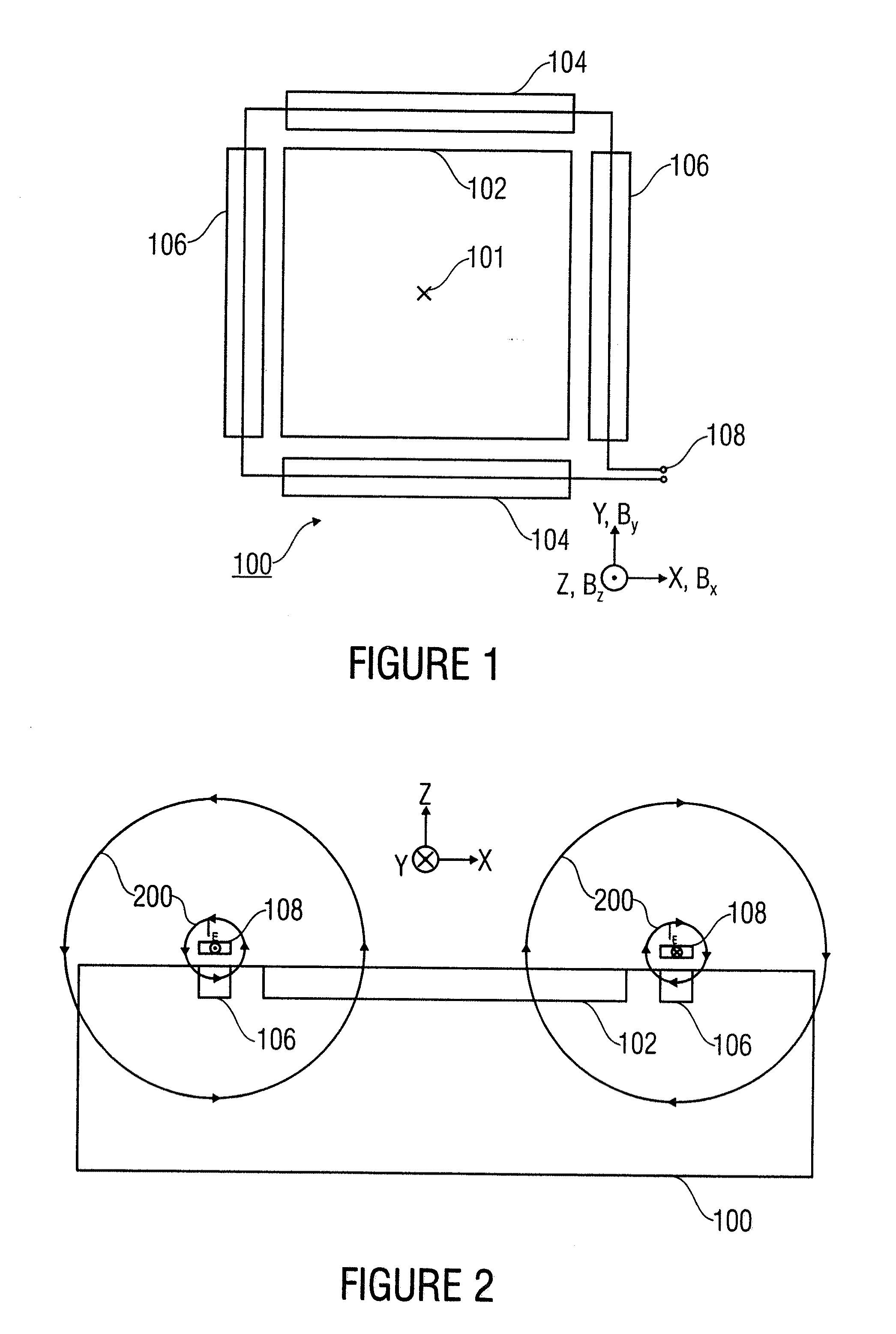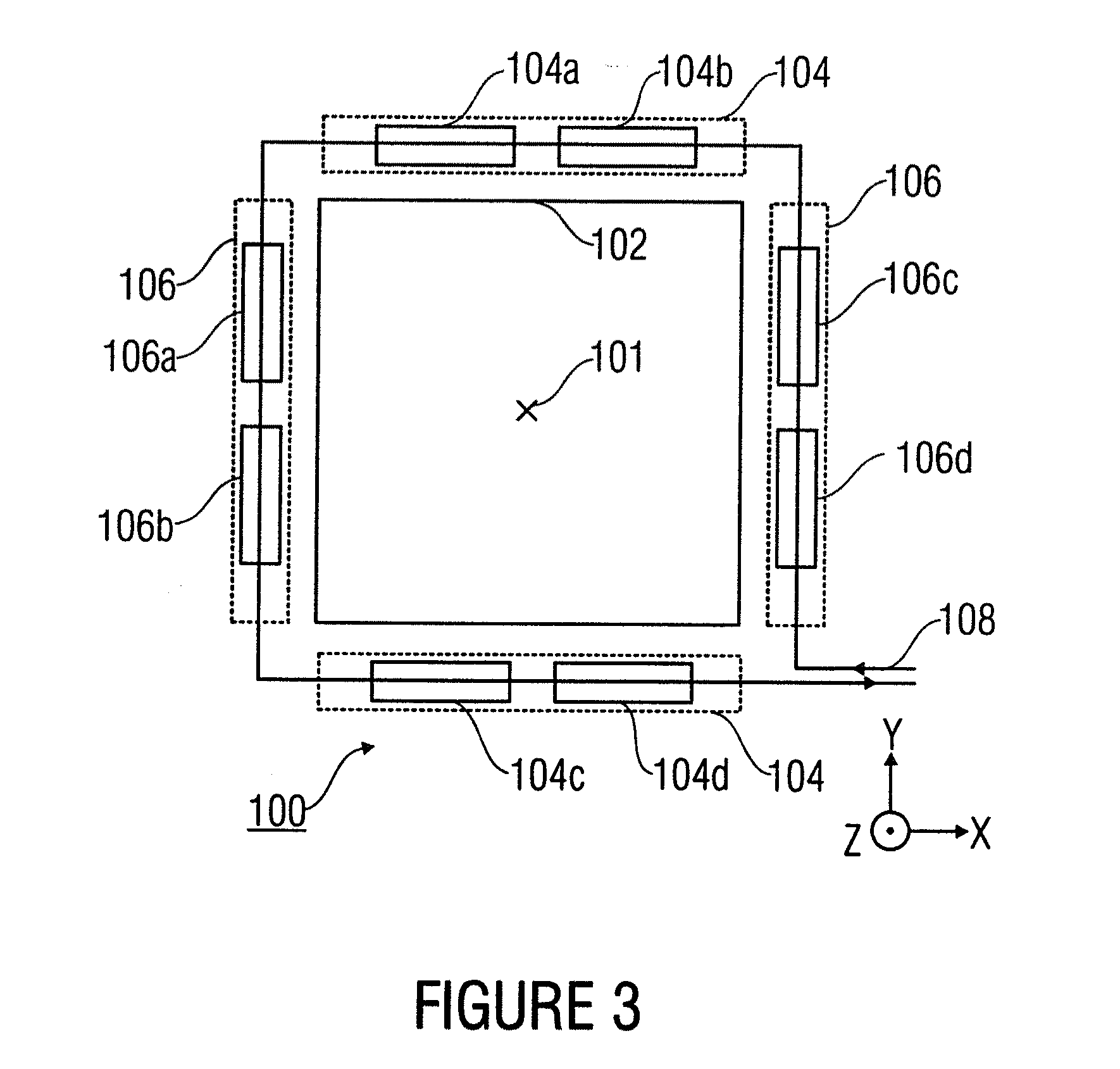Magnetic 3D Sensor Calibratable During Measurement Operation
a 3d sensor and measurement operation technology, applied in the field of hall sensors, can solve the problems of sensor operation with compensation method, sensor cannot be operated with one point measurement, and cannot measure magnetic field at one point, so as to achieve simple and uncomplicated test options, no additional hardware or time effort is required
- Summary
- Abstract
- Description
- Claims
- Application Information
AI Technical Summary
Benefits of technology
Problems solved by technology
Method used
Image
Examples
Embodiment Construction
[0044]With regard to the following discussion, it should be considered that equal or similar functional elements in the different embodiments have the same reference numbers and are thus interchangeable in the different embodiments illustrated below.
[0045]The inventive structure of a magnetic field sensor 100 calibratable during operation according to a first embodiment will be discussed with reference to FIG. 1. FIG. 1 shows an embodiment of an inventive magnetic field sensor 100 for detecting a magnetic field at a reference point 101. Further, FIG. 1 shows a first sensor element arrangement 102, a second sensor element arrangement 104, and a third sensor element arrangement 106. Further, an excitation line 108 is illustrated in FIG. 1.
[0046]The magnetic field sensor can, for example, be implemented on a substrate whose main surface runs parallel to the x-y-level of the arrangement, wherein the z-component runs perpendicular thereto. Correspondingly, the magnetic field is divided i...
PUM
 Login to View More
Login to View More Abstract
Description
Claims
Application Information
 Login to View More
Login to View More - R&D
- Intellectual Property
- Life Sciences
- Materials
- Tech Scout
- Unparalleled Data Quality
- Higher Quality Content
- 60% Fewer Hallucinations
Browse by: Latest US Patents, China's latest patents, Technical Efficacy Thesaurus, Application Domain, Technology Topic, Popular Technical Reports.
© 2025 PatSnap. All rights reserved.Legal|Privacy policy|Modern Slavery Act Transparency Statement|Sitemap|About US| Contact US: help@patsnap.com



